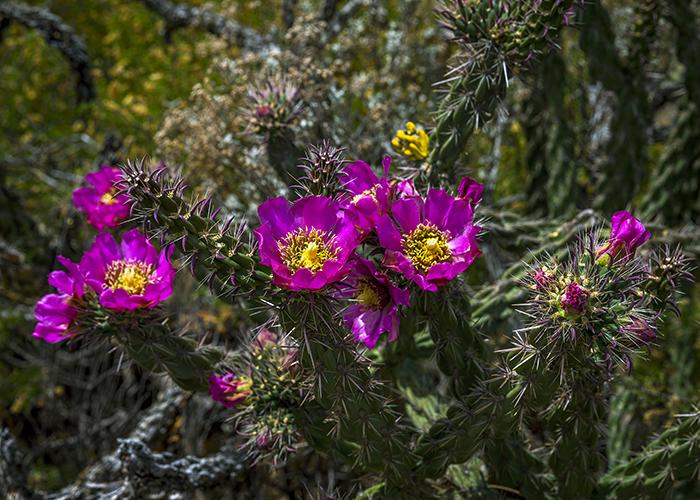
Blooming cholla cactus, Big Bend National Park / Rebecca Latson
Confession: I have not visited every single national park within the United States. I doubt I ever will, although I'll enjoy the effort of trying to do so. I’m pretty certain you already knew this, but I wanted to clear the air before you read this month’s rather subjective article.
Let’s see, to what national parks (including internationally) have I traveled during my 56 years?
- Katmai National Park and Preserve, Alaska
- Lake Clark National Park and Preserve, Alaska
- Denali National Park and Preserve, Alaska
- Grand Canyon National Park, Arizona
- Banff National Park, Canada
- Jasper National Park, Canada
- Waterton Lakes National Park, Canada (pre-digital camera)
- Mesa Verde National Park, Colorado
- Rocky Mountain National Park, Colorado
- Hawai’i Volcanoes National Park, Hawaii
- Killarney National Park, Ireland
- Mammoth Cave National Park, Kentucky (pre-digital camera)
- Acadia National Park, Maine
- Glacier National Park, Montana
- Carlsbad Caverns National Park, New Mexico (pre-digital camera)
- Crater Lake National Park, Oregon (pre-digital camera)
- Great Smoky Mountains National Park, North Carolina/Tennessee (pre-digital camera)
- Big Bend National Park, Texas
- Padre Island National Seashore, Texas
- Arches National Park, Utah
- Canyonlands National Park, Utah
- Zion National Park, Utah (pre-digital camera)
- Mount Rainier National Park, Washington
- Mount Saint Helens National Volcanic Monument, Washington (pre-digital camera)
- North Cascades National Park, Washington (pre-digital camera)
- Olympic National Park, Washington (pre-digital camera)
“Pre-digital camera” means I have no images because I was either too little at the time or because I may have used a film camera and can’t find the negatives. I am guilty of not being as careful with storing and then scanning my film negatives as I am my digital “negatives” imported directly from a memory card. Anyway, from that list of national parks, I have my favorites. These are the places to which I continually return with my cameras. While all national parks are amazing year-round, surely you will agree there is at least one specific season that highlights a particular national park’s beauty more so than during any other time of year.
Spring
Big Bend National Park: This is my favorite park to photograph in the spring. During March through May (best around mid-late April), the cacti and thorny plants display the most amazing blooms, vibrant and brilliantly saturated with yellow, magenta, orange, and red hues. This national park is a bit out of the way, but the blaze of flowering color makes a trip there worth your effort.
Summer
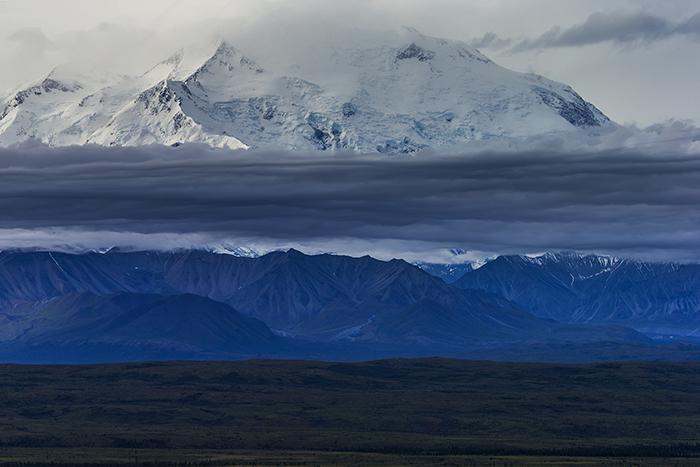
The Mountain makes its own weather, Denali National Park / Rebecca Latson
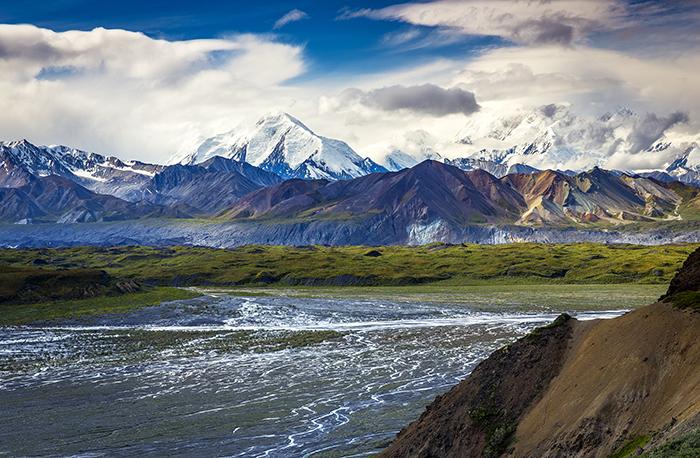
Sun and clouds in the mountains, Denali National Park / Rebecca Latson
Denali National Park: They say only 33 percent of park visitors are ever privileged with a clear view of Denali, which is sort of like the cherry on top of this national park’s scenery sundae. The latter part of summer is one of the best times to visit and photograph the entirety of the park. OK, by “entirety,” I mean scenes all along the Denali Park Road. Sure, you must take a bus, but you’d be amazed at the photos you can capture at each stop. Heck, you'd be amazed at the photos you can capture by just sticking your camera out one of the bus windows. Better yet, reserve a spot with Camp Denali or the North Face Lodge for a three-, four-, or seven-day stay. They offer three daily hikes of varying fitness levels, each led by guides knowledgeable in biology, geology, and other environmental sciences. I stayed at Camp Denali and always took their “foray” walks, with a pace slow enough for me to set up my tripod wherever we found ourselves for the day.
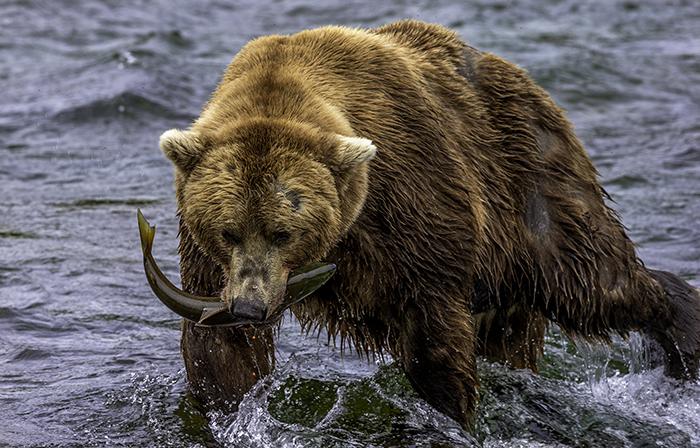
Caught one! Katmai National Park / Rebecca Latson
Katmai National Park: There are few places where the general public can view Alaska’s coastal brown bears in their environment, close up. Katmai during the salmon run is one such place. The bear population at Brooks Camp, where I stayed, is greatest mainly during July and September. In addition to Brooks Camp, there are other places within this national park for bear watching and this link will take you to a viewing calendar. I joined an organized photo tour in July and returned home with wonderful portraits of these incredible bruins. Take note, though, if you visit Brooks Camp. The NPS recently announced a seasonal ban (June 15-August 15) on the use of tripods at the Brooks Falls platform, one of the three viewing platforms along the Brooks River. While the NPS indicates this is to "ensure equal access to facilities for all visitors," I think it's probably more for mitigation of conflicts between photographers and non-photographers (I saw that occur during my visit). This means that -- for this particular viewing platform -- you can only use monopods or your tripod in its collapsed configuration (in effect, making it a sort of monopod) for steadying your camera/lens setup. No more tripods or "rail-mounted fixtures." Don't let that stop you from visiting this amazing national park. Just be aware of where and when you can utilize your tripod setup. Forewarned is forearmed.
Fall
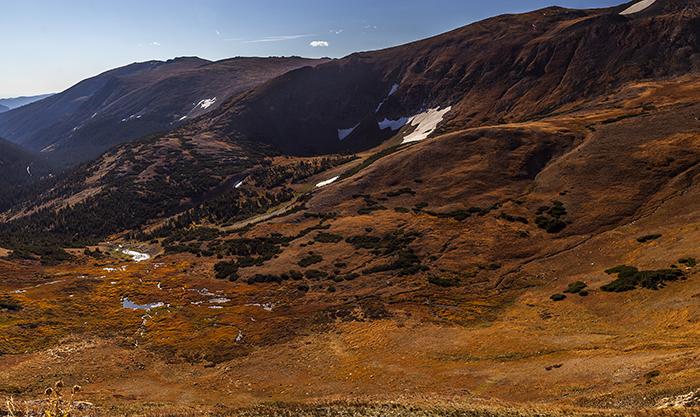
Alpine Visitor Center view, Rocky Mountain National Park / Rebecca Latson
Rocky Mountain National Park: The shivering leaves of aspen are brilliant gold, making a distinct contrast against their white and black bark. Leaves on other trees and bushes model red and orange finery. The elk move down to lower elevations, and the main road through the park (Trail Ridge Road) is still open, as are the hiking trails. Stop off at the Alpine Visitor Center on Trail Ridge Road to photograph the valley scene below, where you can spot elk herds resting on orange tundra cut through by meandering silver streams.
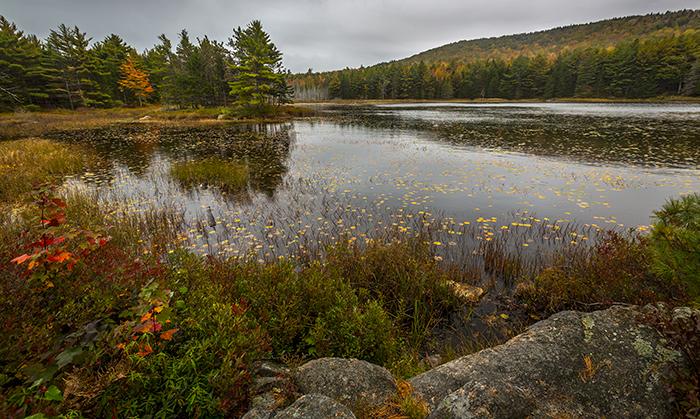
A moody day in the park, Acadia National Park / Rebecca Latson
Acadia National Park: Autumn in this park is superb. Orange, red, and gold surround you, from the treetops down to the leaf-spattered ground. You might even spot wild turkeys roaming the roadside. While you are there, charter a biplane ride at Acadia Air to revel in bird's-eye views of Bass Harbor Lighthouse, Cadillac Mountain, and patches of forest gold amongst the green.
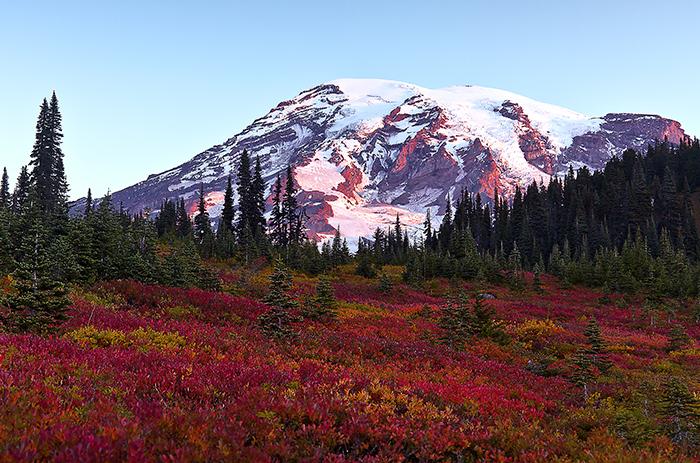
Sunrise in Mount Rainier National Park / Rebecca Latson
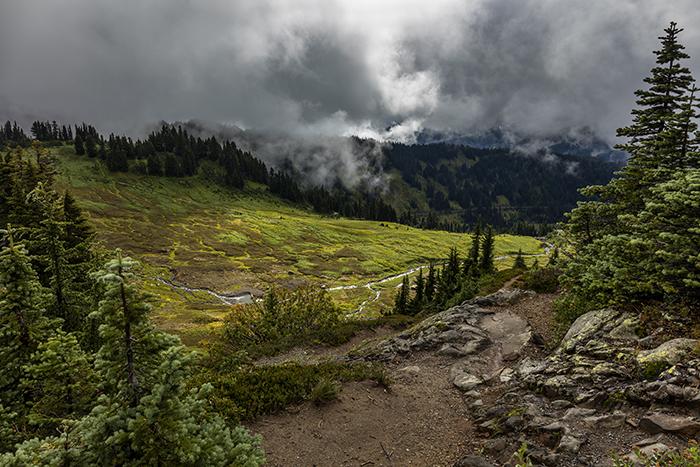
The view from Alta Vista, Mount Rainier National Park / Rebecca Latson
Mount Rainier National Park: During the fall, "The Mountain" provides a craggy, snowy backdrop to the brilliant orange-red hues of the huckleberry bushes below a bright blue sky. On the days when you can’t see Mount Rainier -- which occur more often in the fall -- the mist and low clouds provide a moody, translucent curtain to the deep greens of the rain-washed forest and valleys.
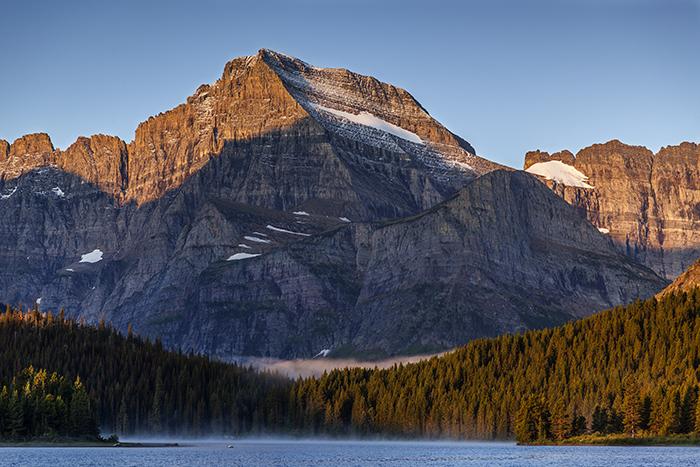
Mount Gould in the fall, Glacier National Park / Rebecca Latson
Glacier National Park: The Going-to-the-Sun Road is usually still open until early October, most of the hiking trails are still clear of snow, the crowds recede, and the elk come down to the lower elevations. The colors of the trees and vegetation on the mountains and roadsides change from green to gold and orange. The moodier sky and sometimes-rainy weather saturate the red rock of the Grinnell Formation and add to the turquoise waters of glacier-fed lakes, streams, and waterfalls. There might even be a light dusting of snow in the higher elevations.
Winter
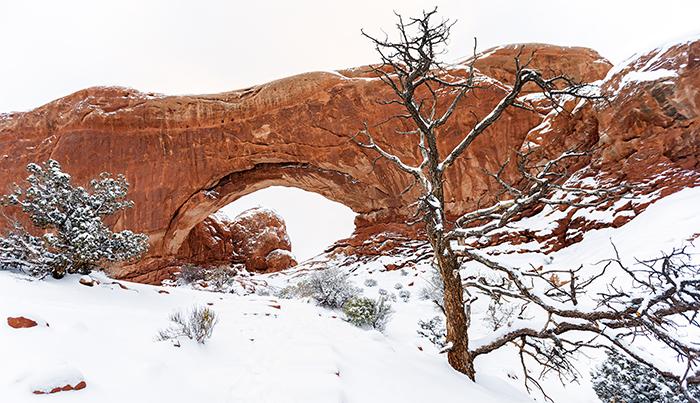
Snow day at the North Window, Arches National Park / Rebecca Latson
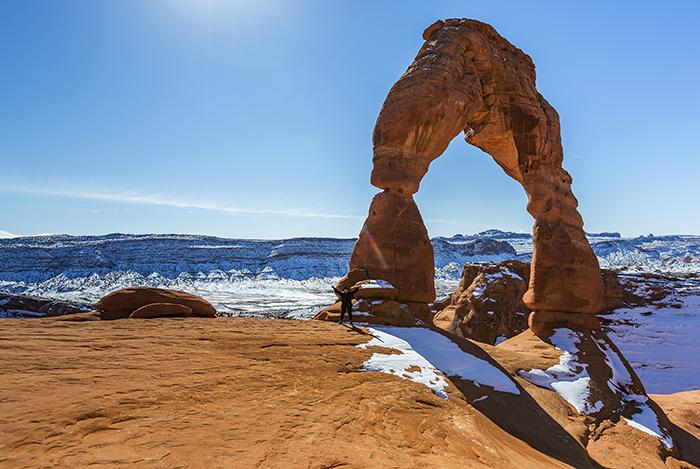
Delicate Arch all to myself, Arches National Park / Rebecca Latson
Arches National Park: A visit to this national park in winter is irresistable. Gone are the furnace-hot temperatures of summer. There’s not much rainfall, so the weather is ambient with bright skies, clear air, and chilly sunrises and sunsets. If you are fortunate, you might encounter a fresh snowfall to contrast with the red-orange rock of the amazing formations for which this park is named. This is the time of year when there are few visitors and, if you are truly lucky, you might even get Delicate Arch all to yourself for a bit.
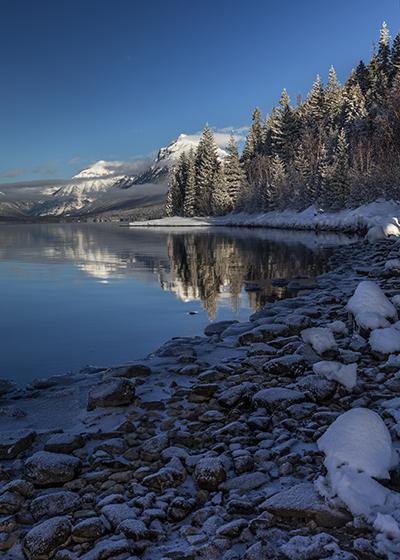
A winter afternoon at Lake McDonald, Glacier National Park / Rebecca Latson
Glacier National Park: Yes, I do have this park listed as a favorite for fall photography, but it’s also a favorite of mine for winter shots. Although the greater portion of Going-to-the-Sun Road is closed to cars in the winter, it remains open to foot traffic. Despite the road closure, this national park provides incredible scenery of trees sporting a light or heavy dusting of snow, icicles as tall as a grown man, thick crusts of ice lacquering the lakes, rivers and creeks, and mountains glowing icy white during the day with tops of red-gold alpenglow at sunset. You might spot a deer stripping lichen from the trees, totally unconcerned with your presence. As you snowshoe or cross-country ski along Going-to-the-Sun Road or in amongst the forest, look for imprints in the snow of bird wings as they land and then take off. The ranger at the Apgar Visitor Center showed me an amazing photo of the swooping imprint of an owl’s wings as it landed, caught its prey, then took flight. Talk about a lucky photo op!
Such are my favorite national parks to photograph during each of the four seasons. I revisit these places as often as I am able, with maybe one or two visits to a new national park in between. If you’ve never visited these parks listed during those particular seasons, then you should. As I continue traveling to other national parks, I am certain I’ll add new seasonal favorites to my list -- possibly favorites which you already have on your own lists. We might even experience a chance meeting, you and I, during a national park visit. If so, let's sit a bit and compare photographic notes.



Comments
Spectacular photos.
Enjoyed the article and your photos. Off-season is often the right season!
Once again, simply wonderful.